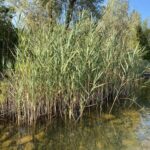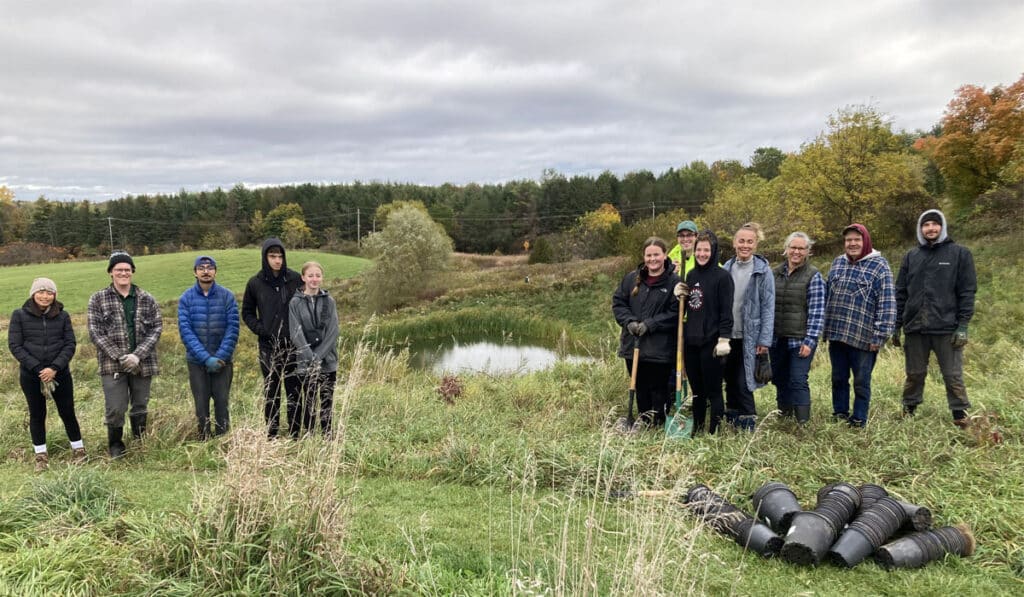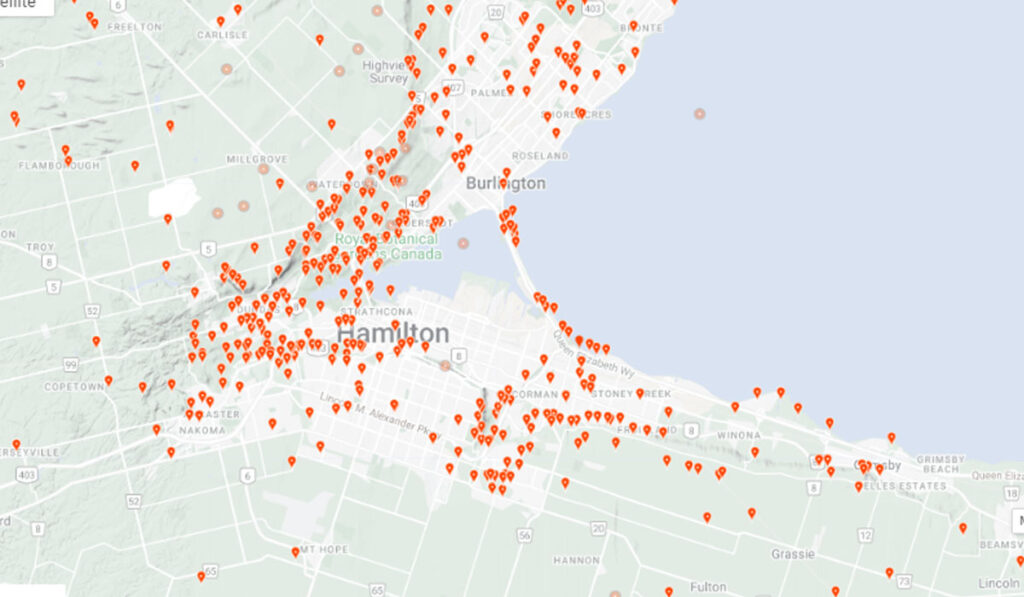HCA staff have recently been working on managing invasive Phragmites at Valens Lake and Fletcher Creek by removing them through the cut-to-drown and spading method.
Why are Phragmites a problem?
Phragmites grow in dense stands that have the potential to completely outcompete and crowd out native species. These dense stands make wildlife movement difficult, and provides poor habitat and food supply for wildlife. Phragmites can grow up to 6 meters tall and spread by roots via rhizomes, seeds or plant fragments.
Managing Phragmites
To manage phragmites, HCA staff first identify and map the populations of Phragmites. Next, staff determine what populations are suitable for a cut-to-drown or spading treatment.
 Valens Lake before.
Valens Lake before. Valens Lake after.
Valens Lake after.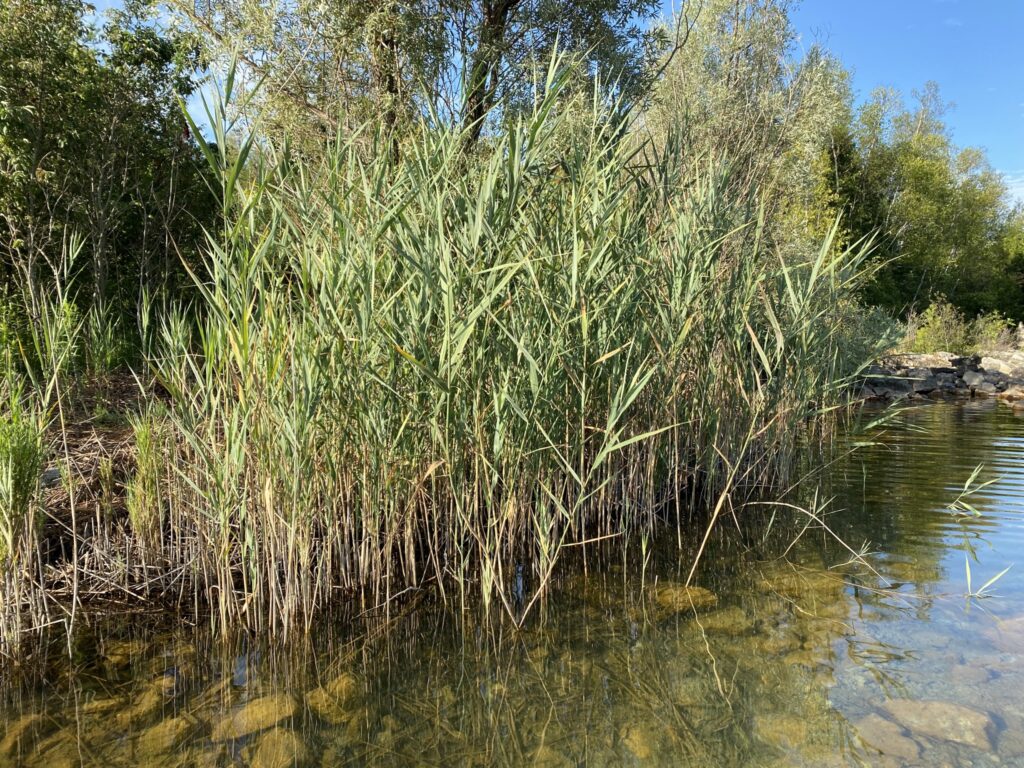 Fletcher Creek before.
Fletcher Creek before. Fletcher Creek after.
Fletcher Creek after. Staff in the water cane cutting.
Staff in the water cane cutting.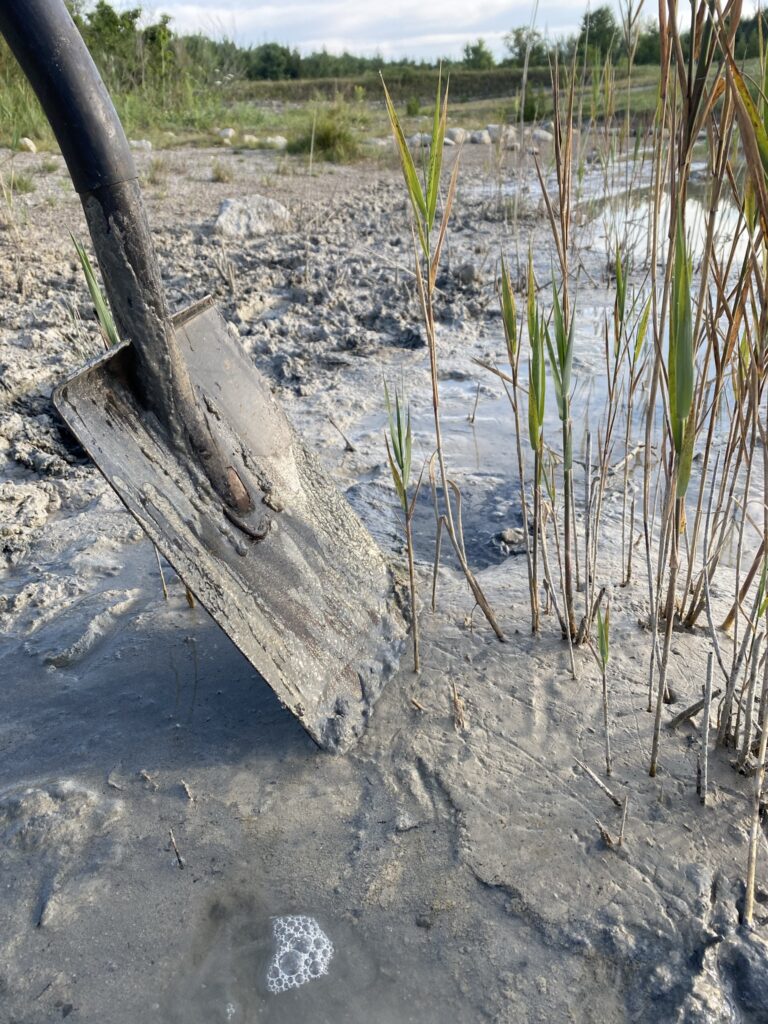 Spading the Phragmites.
Spading the Phragmites.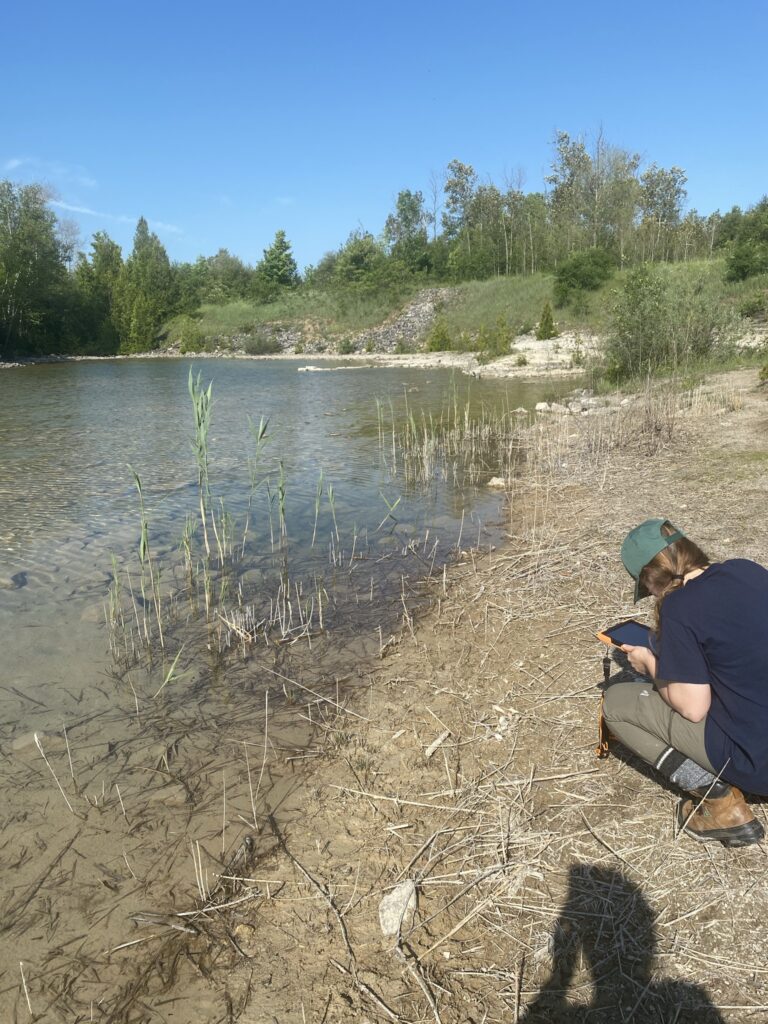 Staff mapping Phragmites population.
Staff mapping Phragmites population.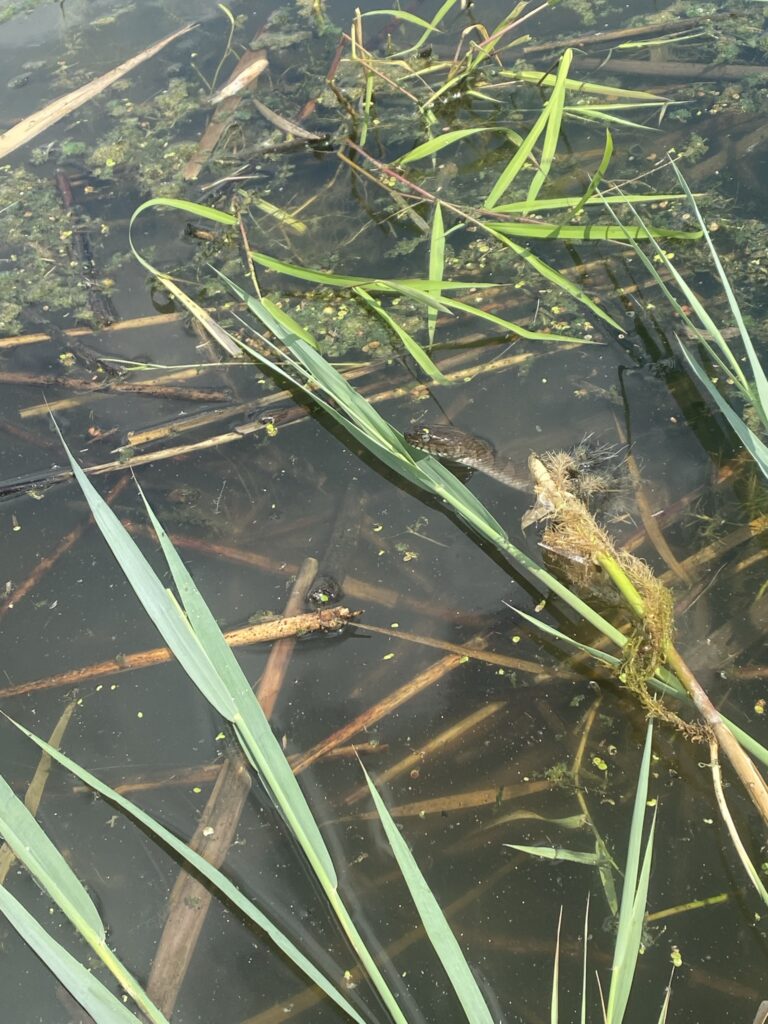 Water snake enjoying the area.
Water snake enjoying the area.Cut-to-Drown Method
What is the cut-to-drown method?
Cut-to-drown technique works well for Phragmites in water, and does just as the name suggests. By cutting the stalks below the water, it cuts off the Phragmites oxygen supply and drowns them.
How to: Using a cane cuter, staff cut the stems below the water as low as possible.
Spading Method
What is the spading method?
Spading is a technique that works well on sandy to soft soil on land and is done by cutting the stalk below the surface.
How to: Using a spade, staff make a cut to the stalk 5 centimeters below the surface at a 45 degree angle.
!When removing Phragmites, do not try to dig them up or cut them above the water or ground surface, as both can stimulate more growth.Outcomes and Next Steps
Staff will continue to manage Phragmites into the fall of this year, and for the next few years. We have already seen native vegetation re-growth, and wildlife, like water snakes and frogs, at the managed sites. These early results are promising and we are looking forward to what changes we will see next year.


